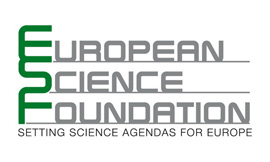
Language
The purpose of this section is to assess to what extent a common public sphere has to be based upon one common language. The claim is often made that European multilingualism works against the emergence of a communicative space sustained by interlocking media. Language played indeed a central role in the formation of European nation-states: all over Europe, we find a strong link between political integration and the idea of the national language. Thus, generally speaking, the consolidation of nation-states was reached at the expenses of linguistic minority groups. In Canada, we get a somewhat different picture, as the Canadian state was built from the beginning on the basis of an agreement between two distinct linguistic communities. In this respect, to what extent does Canada’s basically bi-polar linguistic structure make for a more integrated setting for political communication?
In Europe, recent developments seem to have entailed significant changes regarding the relationship between political and linguistic identities which may be considered as typical of the age of nationalism. The dynamics of Europeanization, observable at different levels and in different institutional contexts have led to defining an approach that advocates unity in diversity, being thereby more open to multilingualism. Ultimately, one could argue that the process of building European institutions and the reciprocal recognition of the equality of state languages in the context of the EU have had some spill over effects for the languages of minorities too. In this respect, Europe may ultimately have moved in a Canadian direction and become more multicultural. But to what extent is the use of English as a lingua franca, which rests upon very different socio-linguistic conditions in Canada and Europe, compatible with a strong institutional commitment to promoting cultural diversity?
At the same time, there are also symptoms that language issues are regaining some of their former political salience. The steady influx of immigrants and the increasing importance of new minorities have an obvious linguistic dimension. We can observe a growing emphasis on linking the acquisition of citizenship rights to language proficiency (in the ‘national’ language) in many European states. Apparently, there is great reluctance to grant the languages of numerically significant immigrant groups, such as Turkish or Arabic, any kind of institutionally recognized minority status. In this regard, contrasting Europe and Canada, with its more open attitude towards the linguistic claims of immigrant communities, would offer valuable insights for assessing the connection between language, citizenship and integration.
Finally, the process of European integration begs the question of the linguistic foundations of transnational politics. How are the objectives of protecting diversity, i.e. keeping up multilingualism, and of achieving political unity, i.e. creating an integrated communicative space, to be balanced against each other? In this regard, the comparison between Europe and Canada may show that achieving such a balance is not primarily a question of the number of languages involved, but rather contingent upon socio-political factors.


